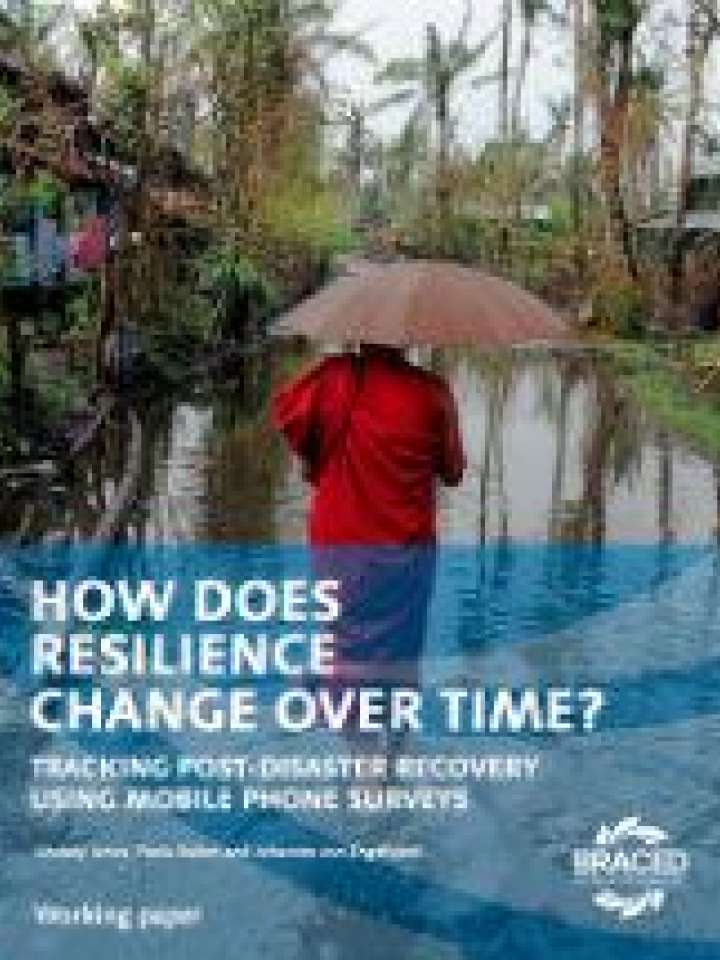How does resilience change over time? Tracking post-disaster recovery using mobile phone surveys
Knowing how climate hazards affect people’s resilience over time is crucial in designing more effective development and humanitarian interventions. This is particularly important in post-disaster contexts, where people’s livelihood opportunities and wellbeing changes rapidly during the long road to recovery. Yet, to date, knowledge of resilience is largely guided by snapshots: one-off surveys taken at a single point in time. This in turn guides how resilience-building interventions are designed and risks neglecting important temporal dimensions of resilience. Greater insights into the evolving nature of resilience are therefore desperately needed.
This paper tracks post-disaster recovery and changes in levels of resilience over time using a number of methodological innovations. Drawing on BRACED’s Rapid Response Research (RRR) project, information has been collected on how households in eastern Myanmar recover from a series of extensive flood events using a mobile phone panel survey of 1,200 individuals. The paper also makes use of new ways of measuring resilience using people’s perceptions of their own risk, by collecting Subjectively Evaluated Resilience Scores (SERS) roughly every two months. The flexibility of the SERS approach allows authors to measure the impact of the flooding on households’ resilience to a range of overlapping threats (not just a single hazard), which we term ‘overall resilience’.
